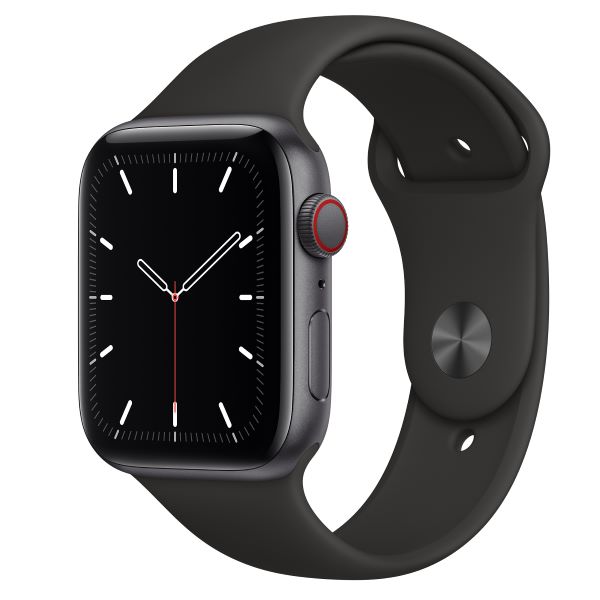The Apple doesn't fall far from the tree if you're looking to save some cash.
Apple Watch SE review: Financially fit
Our verdict: Is the Apple Watch SE worth it?
In her Apple Watch Series 6 review, Georgia dubbed it the best smartwatch on the market and it is but the SE's friendlier price makes for an attractive alternative. Fitness tracking and app integration are as smooth as ever with the SE and most won't miss the few Series 6 features you don't get. The only downsides, such as 18-hour battery life, aren't exclusive to the budget SE. If an always-on-display and blood-oxygen monitoring aren't vital features for you, save yourself a few hundred bucks with SE.
- More reasonable pricing
- Buttery smooth app integration
- Fun with watch faces
- User-friendly fitness options
- 18 hour battery life
- Unreliable raise-to-wake
- Health data inconsistencies
Apple’s budget-conscious SE line has found its way to wearables with the $429 Apple Watch SE, a cheaper alternative to the fully-featured Apple Watch Series 6. And just like Apple’s increasingly complicated family of smartphones, the bells and whistles you get with the premium Series 6 are mostly small luxuries most people could do without. Find out whether you can afford to save some cash in our Apple Watch SE review.
Apple Watch SE vs Series 6
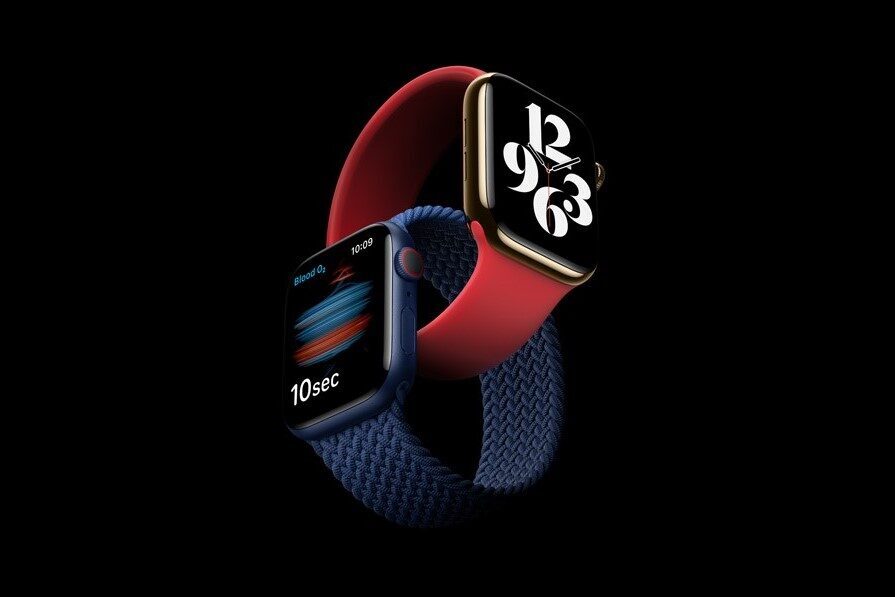
Before we dig into everything the SE offers, let’s take a look at what you’re missing out on if you don’t go premium.
Processing power
The most significant downgrade is probably the Series 5 processor inside the Apple Watch SE. The 2020 iPhone SE did a similar thing, leaning on last year’s iPhone 11 A13 Bionic chipset to power a more budget-friendly device. Most won’t notice much of a difference, but after seeing how snappy the Series 6 is in action, the Apple Watch SE’s slightly slower response times have begun to grate on me a little.
Blood-oxygen monitoring
The other thing you’re missing out on if you opt for the SE is the blood oxygen monitor. The issue with that feature is that its readings don’t seem to be very accurate, and people who need to monitor their blood oxygen levels closely are probably best suited leaving it to the professionals, or purchasing a standalone pulse oximetry meter. So it’s a feature that the majority of people aren’t going to miss.
Price and material options
You also get fewer options for colours and materials with the SE. It’s only available in aluminium and three colour options. The Series 6 is available in eight colours, and stainless steel or titanium (at a price, of course). The Series 6 also lets you set an always-on display (though that doesn’t help the already so-so battery life).
But the important difference to note is the price. The SE starts at $429, and Series 6 at $599. For me, that saving is worth the small sacrifices to performance, features and cosmetic options.
How much does the Apple Watch SE cost?
The more affordable price point on the Apple Watch SE is surely what will attract most customers comparing their options. As always, Apple has a warped idea of what constitutes ‘affordable’ but the Apple Watch SE is a good price for what you get.
The Apple Watch SE starts at $429 here in Australia, that’s for the 40mm non-cellular version, but that price can go as high as $549, depending on what you need. Officeworks currently has the best price on the Apple Watch SE, but only by a small $2 saving. You’ll be paying almost the same price no matter where you pick it up.
Here’s a closer look at every Apple Watch SE model and how much they’ll cost you in Australia.
Apple Watch SE performance
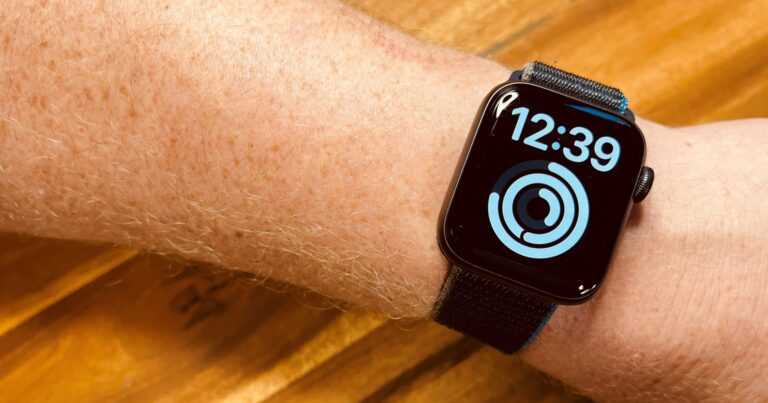
Apple Watch SE 40MM
Apple is boasting a powerful new processor in its Series 6, while the SE gets the leftovers of the Series 5 generation. Thankfully, those leftovers are all you need for a smartwatch. The Series 6 boasts a 20% speed improvement on the SE/Series 5 processor, and while the difference can be noticeable when compared side-by-side, the slower processor feels like less of an inconvenience in a smartwatch than it would in a smartphone. Sure, some of the animations aren’t as fluid on the SE as they are on the Series 6, but it simply doesn’t matter when all you’re doing is checking the time or glancing at your activity rings.
Apple Watch SE bands and colours
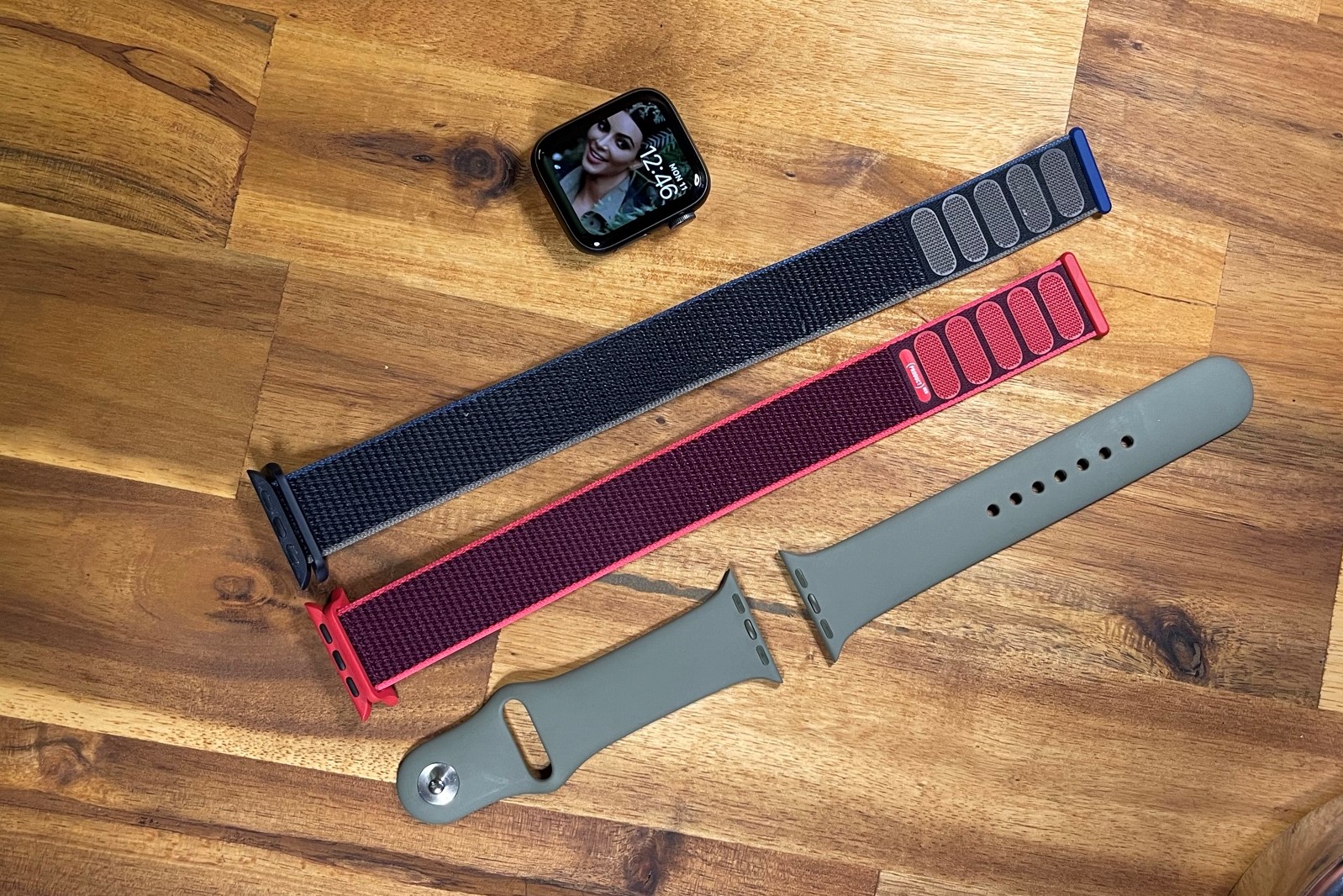
Apple Watch Braided Sport Loop (Atlantic Blue and Product Red), and Rubber Sport Loop
Although there’s a smaller selection of colours available for the Apple Watch SE than the Series 6, every Apple Watch SE band can be used on the Series 6 and vice-versa. That means you can use the rubber or braided Solo Loop, both Sport Band variants, the Nike Sport bands, the standard Leather and Hermès Leather range, and the premium Stainless Steel Loops on the Apple Watch SE. Unfortunately, the SE’s affordability didn’t translate to the band range, your options still fetch between $69 and $139 a pop. The Apple Watch SE comes with the silicone Solo Loop, while every other option will cost you extra.
For the sake of this review, I tested out the Sport and Sport Braided Loops and I’ve stuck with the braided alternative. The packed-in rubber version isn’t overly uncomfortable day-to-day, it just gets a little clammy after a run or swim.
The Apple Watch SE only comes in three different options for case finish: Space Grey, Silver, and Gold. With that said, it’s your band of choice that makes the most noticeable difference. Out of the box, you’ve got ten colour options for your standard Solo Loop: Northern Blue, Plum, Deep Navy, Kumquat, Ginger, Cyprus Green, Pink Citrus, White, Black and Product Red.
Best fitness tracking in the game
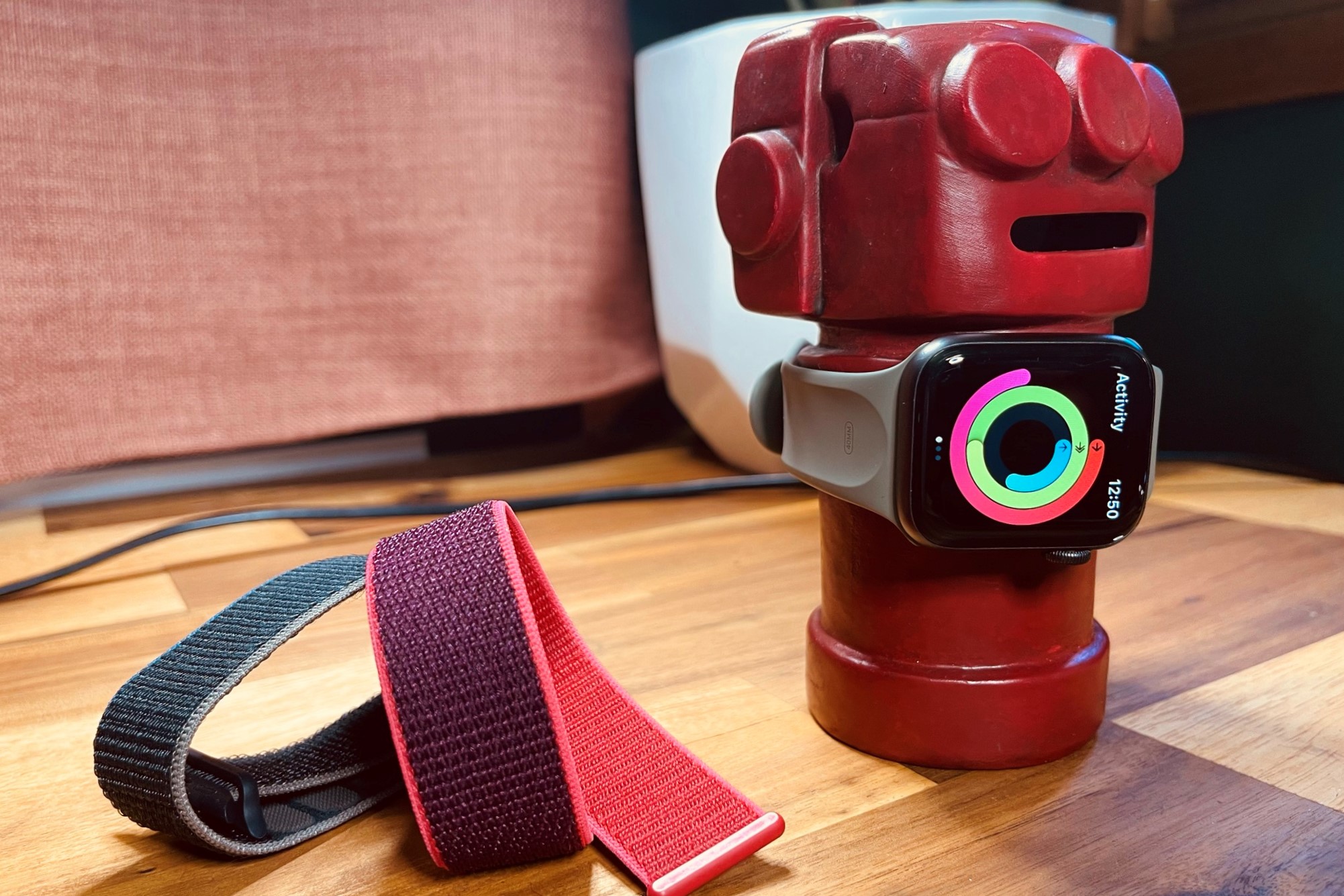
Apple Watch SE Activity Rings
Returning to Apple Watch after a series of Android-compatible smartwatches has been a fresh reminder of what makes its fitness tracking so pleasant. There might be more complicated fitness trackers out there, but the Apple Watch embodies that old Steve Jobs credo: It just works.
You’re free to tailor your own experience by adding personal data to the Health app, and setting individual fitness goals but if you can’t be stuffed, or you’re just none the wiser, tracking your wellbeing with Apple’s iconic Activity Rings is as simple as opening the Activity App or setting the correct Watch face. From there, the Apple Watch will start sending good vibes your way whenever you manage to pull yourself out of the house for a few hours.
For my money, this simplicity makes the Apple Watch one of the best in the fitness tracking game. When I finish my workday, seeing I’m close to closing out my exercise or standing goal is all the encouragement I need to go for a quick jog, zip to my local climbing gym, or boot up Fitness Boxing on Switch.
Apple Watch SE Activity RingsThe Apple Watch’s fitness tracking is perfect for someone like me who doesn’t take their fitness too seriously. If I’m out for a walk, the Apple Watch will give me a little tap on the wrist and ask if I’m going for an outside walk and will track that as a workout. What surprised me most about this was how accurate it was. I was about halfway through my walk when it had enough movement data to determine what I was doing, but when I accepted the prompt, I realised that it had already been measuring this workout in the background -- so I started the workout with roughly 10 minutes worth of data under my belt.
Again, I’m not super invested in my fitness but for those that are, the Apple Watch does a lot of the heavy lifting for you. There are loads of activity types in the Workout app too. Tai Chi, Wrestling, HIIT (High-Intensity Interval Training), Wheelchair-based workouts, even Fitness Gaming and... Pickleball? My point is, there’s something for everyone and the Apple Watch caters to every type of fitness enthusiast; whether you’re casually trying to burn calories, or you're training rigorously for a big event.
Apple Watch SE battery life
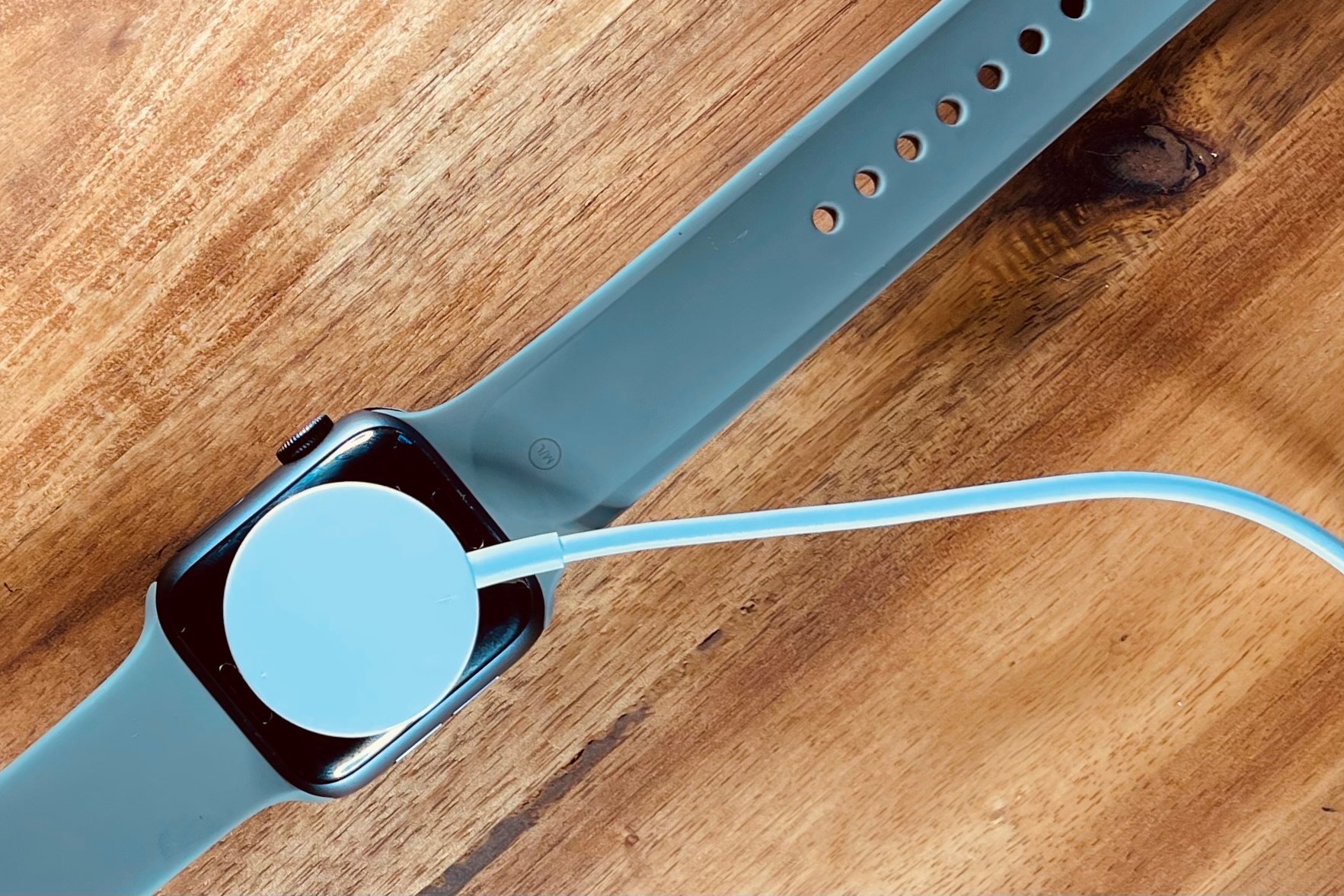
Apple Watch SE magnetic USB-A charger
The Apple Watch SE is a busy little bee, especially considering all the work it does behind the scenes. Unfortunately, all that hard work takes a toll on the battery. Apple doesn’t make any big claims on the Apple Watch SE’s battery life-- it advertises eighteen hours of use between charges, which is the same as the Series 6. I’ve managed about that on average, sometimes getting two full days if I haven’t used it as much.
The Apple Watch isn’t a huge outlier. Its closest competitor, the Galaxy Watch 3 will only last 2 days on average, and the $449 OPPO Watch only lasts 24 hours. It’s the fitness tracker brands that give Apple a run for its money. The Fitbit Versa 3 can give you six full days of charge, and the Garmin Fenix 6 series can last up to nine days without needing a charge.
Basically, if you don’t like the sound of charging your smartwatch every other day, you might be better served shopping for a fitness tracker with smartwatch capabilities, rather than a smartwatch with fitness tracking features. Frankly, I’d count myself in that camp. For everything the Apple Watch SE gets right, battery life and charging is a huge obstacle. For one, the sleep tracking and alarm features make it something I like to wear overnight.
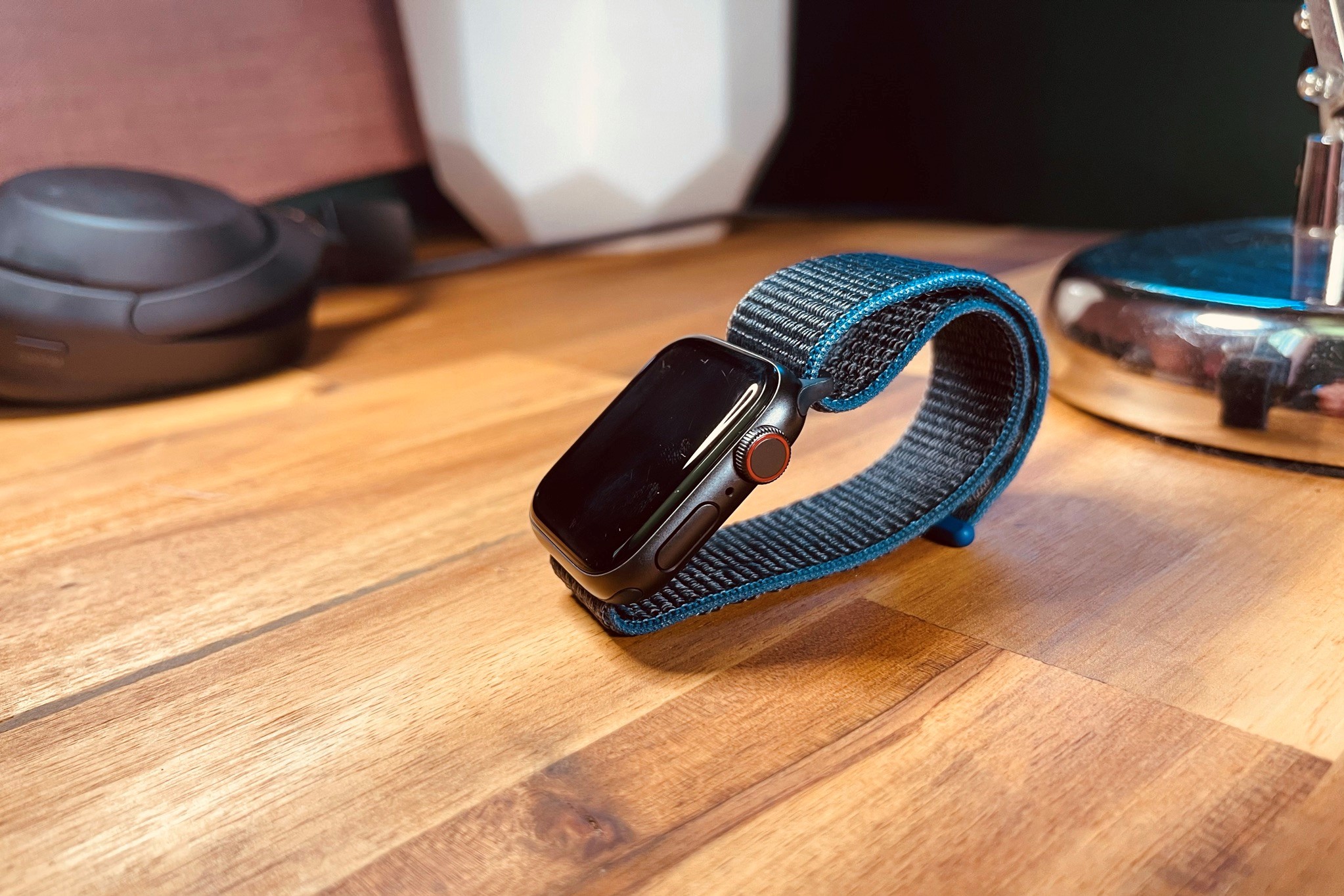
Apple Watch SE
As Georgia pointed out in her Series 6 review, the sleep tracker is hit and miss, but the wake-up routine has been a game-changer for me. I’m a heavy sleeper and have no issue sleeping through three separate alarms. The Apple Watch uses haptic feedback (light vibrations) to tap your wrist with increasing intensity, slowly stirring you from your sleep. It’s far more pleasant than an audio alarm and a delightful way to start the day.
Be that as it may, wearing the Apple Watch to bed means I can’t charge it overnight. So I always need to find a spare hour or two during the day to give it a little extra juice. Even if I wanted to charge it overnight, therein lies another problem. Apple doesn’t pack in a charging brick with the Apple Watch, nor its latest iPhones for that matter.
My current iPhone charger is a USB-C-to-lightning situation. So there’s no chance I can use that charger. That means it’s on me to track down a plug with a traditional USB-A port, which isn’t all that difficult but it's becoming harder as more devices move to USB-C.
In reality, most of my charging is done via a laptop USB port, which just won’t be convenient for a lot of people.
Seamless app integration
One of the most pleasant surprises since returning to Apple Watch is how it adapts third-party iOS apps for the small screen. Take the Cubo AI Baby Monitor app for example. There isn’t necessarily a Cubo AI Apple watch app that I can access, but whenever I get an iPhone alert, the Apple Watch gives me a small photograph snapshot of the baby monitor’s feed. It’s so handy because the Cubo AI Plus, like a lot of baby monitors, errs on the side of caution, meaning you get a lot of false alarms. Checking your phone every single time there’s a baby monitor notification is more effort than it sounds. The ability to glance at a snapshot from the baby monitor on the Apple Watch simply means I don’t have to use my phone as much.
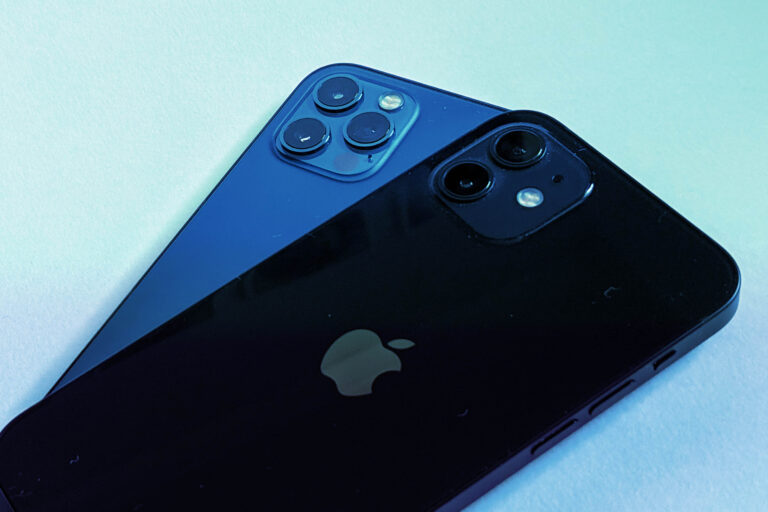
That’s a recurring theme with the Apple Watch SE. When the original Apple Watch first launched, a lot of the conversation revolved around how lazy it seemed to check notifications on your wrist, rather than on your phone. The Apple Watch seemed like it was bridging a very small gap.
After returning to the Apple Watch after a few years, I’ve realised that, however unnecessary it might seem, I’m using my iPhone a lot less. It seems antithetical that another connected device would reduce your screen time but that’s precisely what I’ve found. When I’m not using the Apple Watch, I might unlock my phone to check a Facebook message before mindlessly navigating to Twitter out of habit, and before you know it, I’ve wasted thirty minutes doom scrolling. When I get a notification on the Apple Watch, I’m free to glance at the message and move on with my life, I also feel less compelled to respond immediately. I’ve been trying to reduce my screen time over the last few months, and the Apple Watch SE has gone a long way in helping me achieve that.
Occasional quirks
All that said, there are still occasions where I’m forced to use my phone or where the two devices don’t always sync up. As I mentioned earlier, there are times during the day where I need to give the Apple Watch a charge, so I’m forced to leave it at home when I’m out for a walk. The iPhone 12 tracks steps just like the Apple Watch, and that data should sync up no issue but I’ve found that there’s often a significant discrepancy between the workout data gathered from the iPhone and the data gathered from the Apple Watch.
This isn’t surprising as the iPhone 12 Pro has fewer relevant sensors with which to collect workout data. The Apple Watch SE (and Series 6) both use altitude and heart rate data in their calculations. Still, I’d figured the device would be smart enough to recognise my daily walking route (which doesn’t change Monday to Friday) to assess the calories burnt.
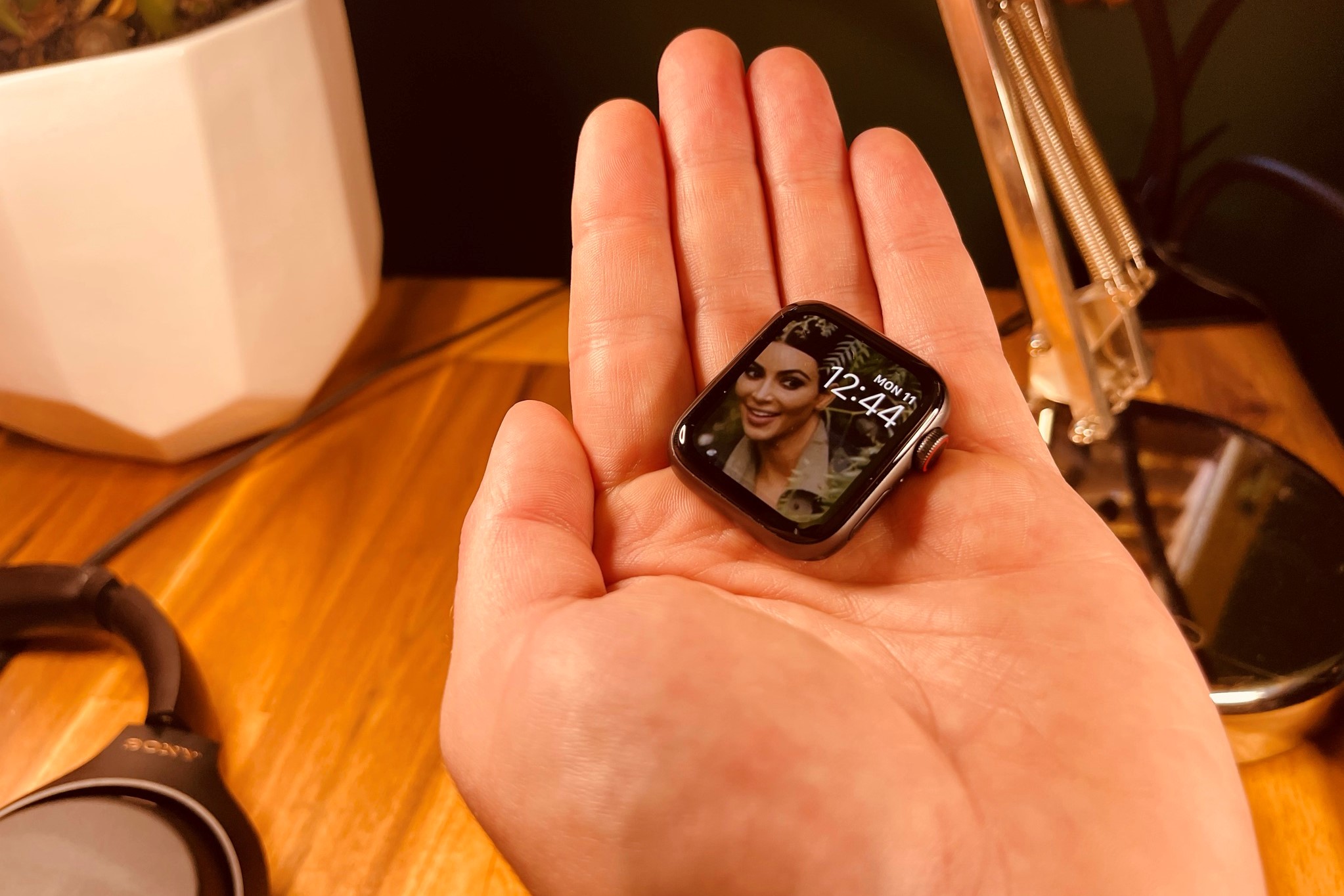
Apple Watch SE 40mm
There are also times where the sensors on the Apple Watch SE are far too generous for their own good. I woke up the other morning to an empty battery, so I charged it on my bedside table for a few hours. When I took it off at lunch, my standing goal was almost half-way to the finish line, despite being sat at my desk for most of the morning. My best guess is that the bedside table is just high enough to dupe the Watch into thinking I was standing stationary for the entire morning but it’s smart enough to know when I’ve removed my Watch, so why would it count those hours? It’s better than not being rewarded for my activity at all, just a little confusing.
Lastly, one small annoyance that I thought would be fixed at this point are the inconsistencies with raise-to-wake. Most of the time it works fine, but I’ve found it less receptive if I’ve just hopped out of the shower, or I’m trying to show someone else something on the Apple Watch SE display You quickly learn there’s a very specific motion required to active raise-to-wake and it can be a tad annoying when you haven’t fulfilled the Watch’s needs precisely.
Is the Apple Watch SE worth it?
I’d recommend the Apple Watch SE over the Series 6 in a (slightly elevated) heartbeat. Unless the blood-oxygen monitor, always-on display, and faster processor sound like features you can’t do without, the Apple Watch SE is a fully-featured, reliable smartwatch that improves upon last gen’s premium option at a much more affordable price. Besides some minor battery and UX inconveniences, the Apple Watch SE performs flawlessly and most people won’t miss the features it doesn’t have.
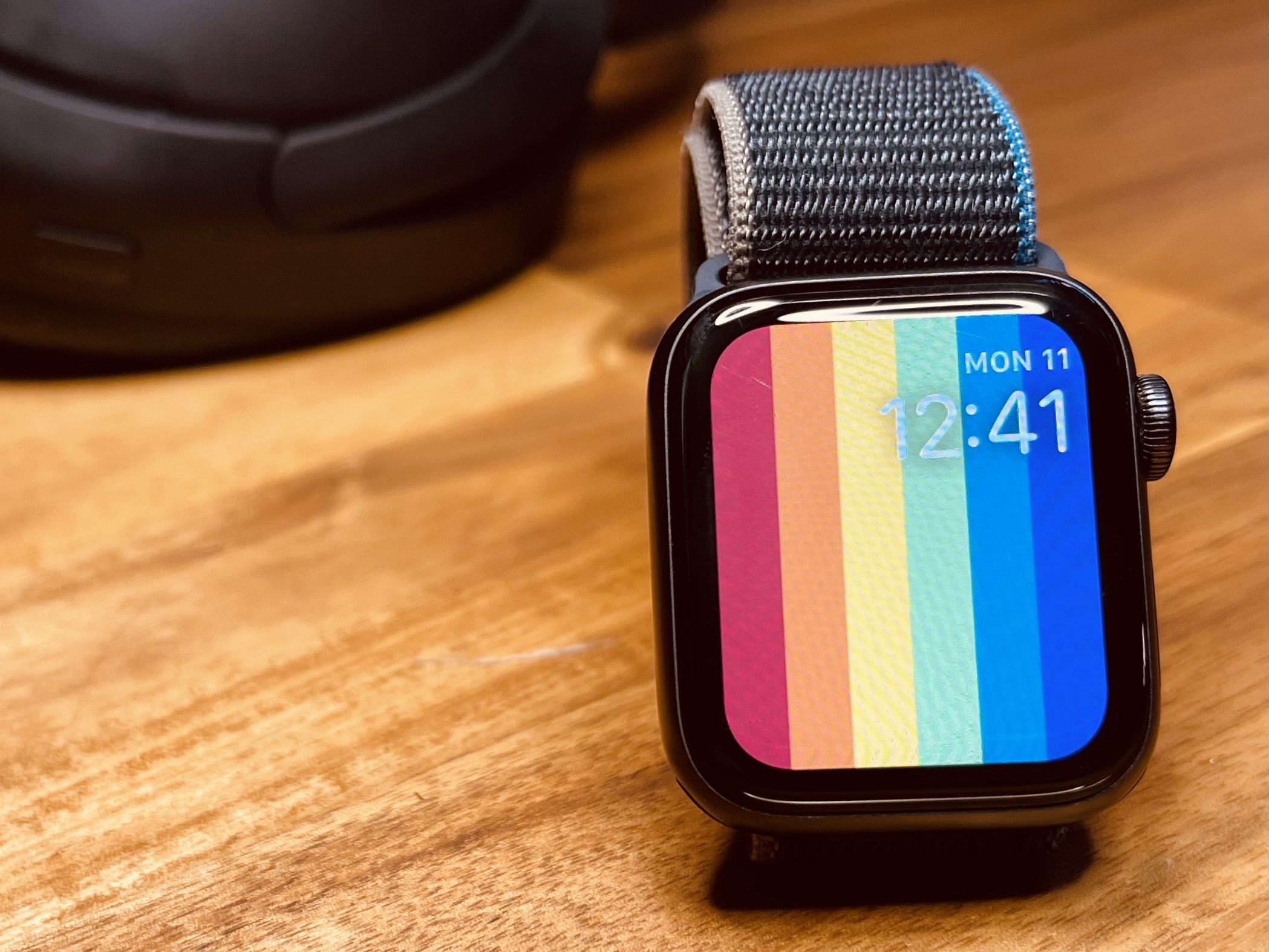
Related Articles





